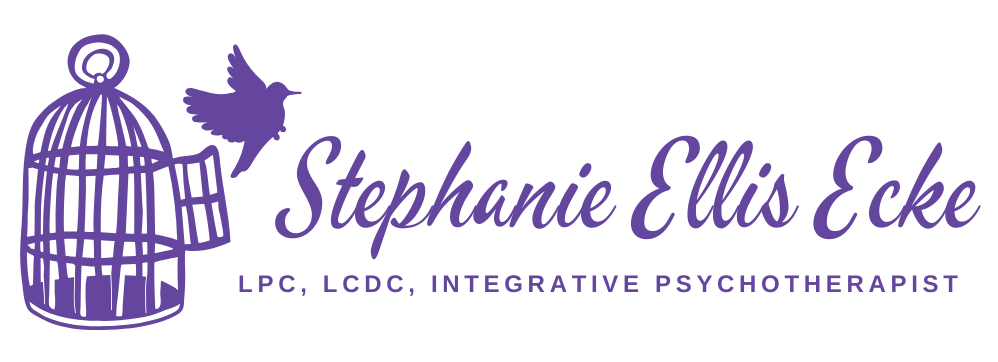Having been a recovery therapist for over 27 years as well as in recovery myself, I know a few things about what works and what doesn’t work. I’ve tried a multitude of techniques and modalities to help myself and my clients. I am always in search of the fastest and most effective means of helping others on the journey toward healing and wholeness. I was trained extensively by Pia Mellody at the Meadows in Post Induction Therapy over a period of about 10 years and I consider it a wonderful framework from which to teach. At the same time, I continued to work with other systems that accessed the brain and body holistically like EMDR, EFT and a host of modalities.
While I had a ton of tools in my toolbox, getting to roots of issues and helping them move forward quickly, gently and effectively remained challenging and somewhat frustrating.
About three years ago, on the verge of burnout, I was introduced to a new healing system that has transformed the way I work with clients. When I discovered RIM, Regenerating Images in Memory, in early 2015, I was intrigued. After watching the developer and originator of RIM, Dr. Deb Sandella, I witnessed her accomplish in an hour and a half what would ordinarily take me 3-6 sessions to achieve! After learning more about RIM, I was hooked. I have now been facilitating, learning and even training RIM ever since. Because of RIM’s gentle but powerful qualities, I am no longer burned out and am even more passionate about empowering clients to heal and become all they were meant to be.
WHAT IS SO DIFFERENT ABOUT RIM?
There are many factors, some subtle some not so subtle, that make RIM different to other therapies. Hopefully I can outline just a few of them to make learning about this transformational and healing technique intriguing to you.
Underlying addiction is often unresolved trauma, especially when it comes to recurrent relapse. Treatment centers have been reluctant to address trauma in the first 30 days of treatment due to destabilization risks. Certain aspects of RIM can gently unveil the roots of trauma and have a stabilizing effect at the same time and through the use of different skills, help clients reshape/regenerate traumatic events into events in which they can in the present have a sense of mastery over. The need for medicating emotional reality is decreased.
Most addicts lack the ability to self-soothe, RIM teaches clients in a very organic and holistic way how to soothe immature and more vulnerable parts of themselves in an almost seamless fashion, creating new neuro pathways that make it easier to repeat this newfound ability in their lives. Unlike other therapies though, the actual issue comes completely from the client and not the therapist. The therapist does not have to probe for anything as we learn to completely trust clients and their own organic emotional operating system (EOS).
Addicts also lack positive inner resources which can help in the self-soothing process. This fact makes it very hard for them to be alone and leads to them seeking attachment objects outside of the self. With RIM, clients learn that these helpful resources are only limited by their imaginations, are within them and that they are never alone. This also reduces the need to find a “fix” outside of the self.
Trauma sufferers in many cases have learned to detach from their bodies, going up into their heads, completely numbing out. RIM helps clients reconnect to their bodies in a nonthreatening way, thus easily enabling them to feel and create the mind/body connection so desperately needed for complete healing to occur. They begin to notice their bodies again and feel which helps them in the healing process.
RIM gives clients an opportunity to experience emotions in waves and gain confidence that the emotions will subside and that they can handle them. Through many different skills, including dialoguing and resourcing, clients gain the assurance that they have the support needed to tolerate whatever comes up. This increases emotional intelligence as clients learn about the “River of Emotion”. Long-held repressed emotion is accessed and released often in one session and yet because the session is almost entirely client led, is connected to their resources, feels safe and connected to their bodies, the risk of flooding is minimized. Sessions end when the client has reached a resolution so therefore each 75-120 minute session is a complete and finished product in and of itself, again reinforcing client confidence and self-reliance.
During a RIM session, underlying issues, interpersonal conflicts and other deep-seated difficulties are sometimes quickly revealed. Thus, RIM in itself can often serve as a semi-diagnostic tool.
All of us working in the recovery field quickly learn that old habits of thinking die hard. RIM uses the body, mind and imagination to powerfully tap into deeply held negative beliefs and memories and gently transform them into healthy beliefs and news memories. Although of course we cannot change actual historical fact, we can change body memories and it seems that those that are held in cellular memory stored as trauma can change along with it.
Another difference to many modalities is that RIM does not particularly rely on a therapeutic alliance. The client is taught that answers are within. It is not dependent on a therapist since anyone can learn to tap into their imagination, body and emotion. The client is taught more self-reliance and can even learn the RIM techniques to do on themselves. By using the imagination and the body in a more right- brain, nonlinear way, clients learn to use whole brain and thus impulse control can being to improve.
These are just a few of the many benefits of using RIM with clients in recovery. The word regenerate actually means to bring new and more vigorous life to. In RIM that is what we are doing: helping clients bring new and vigorous life to old dead memories and events that are subconsciously running their lives, often to clients’ detriment. With RIM and the active use of imagination coupled with the body, we help clients regenerate or “create again” new outcomes which help them live out of fresh beliefs and ideas about themselves, life and others. By accessing imagination, clients begin to regain a childlike trust and wonder which may have been lost, increasing joy and positive emotion. RIM often takes only a few (and sometimes only one) sessions for clients to begin to see results. They find more exuberance in their lives as they shed these old beliefs, roles and ideas and are able to begin to live more fully in the present.
For more info about RIM read: Goodbye Hurt and Pain by Dr. Deb Sandella.
For training sessions to learn RIM for recovery professionals, contact:
Stephanie Ellis Ecke, LPC, LCDC, RIM Master Trainer
210-287-4002
stephanieecke2@gmail.com
www.stephanieecke.com

